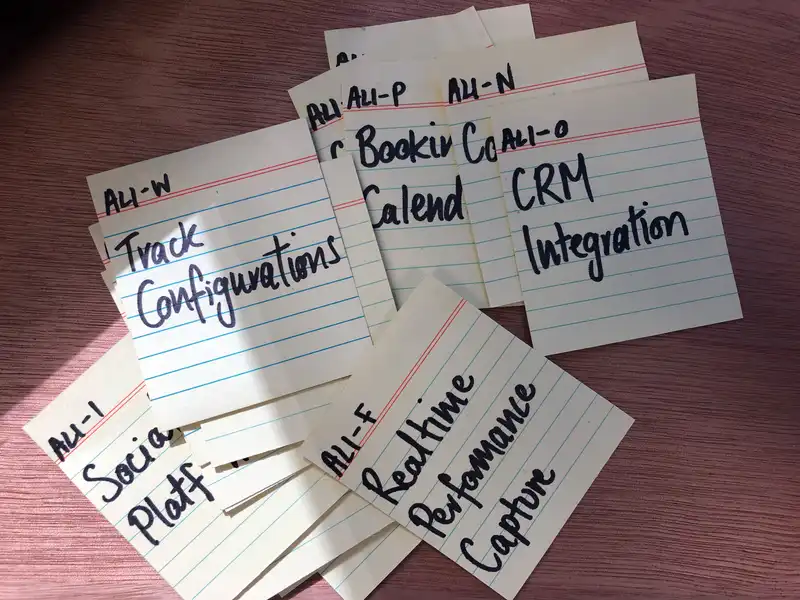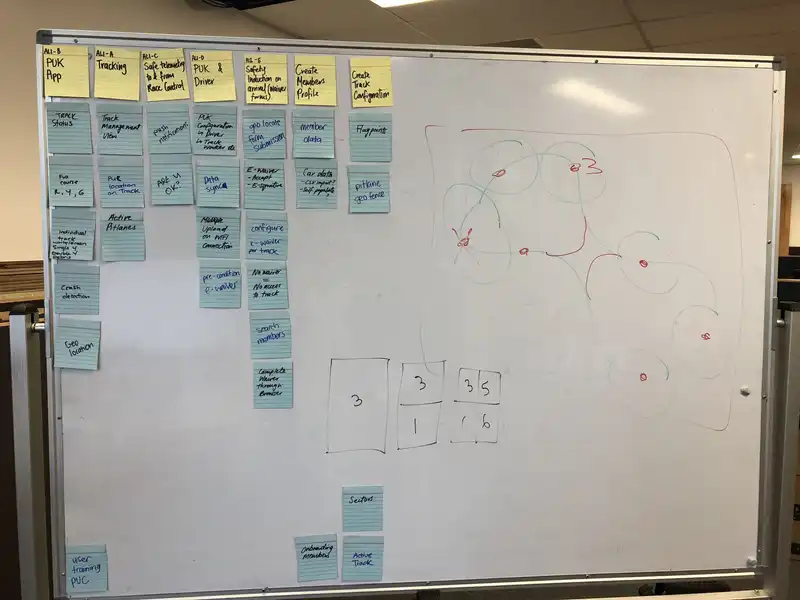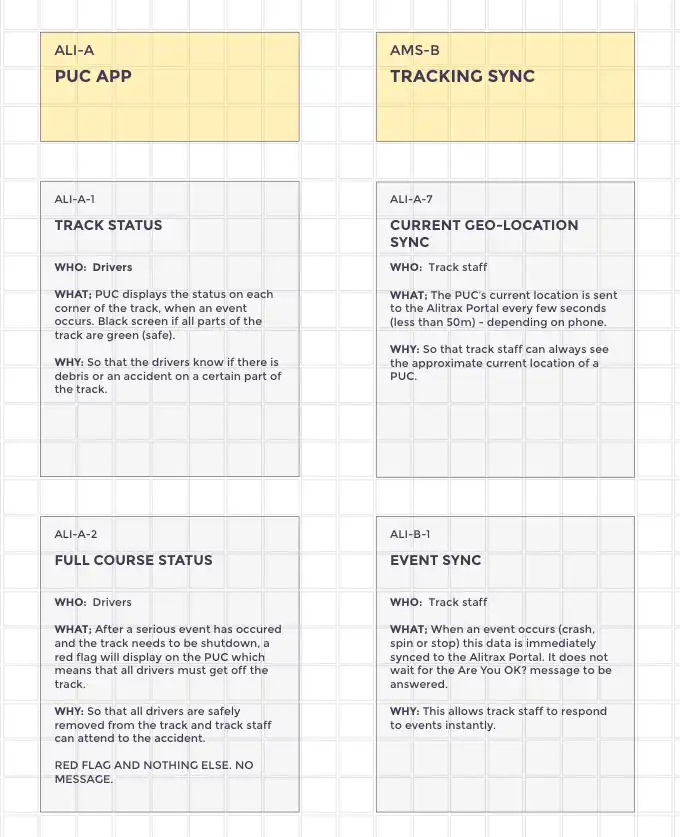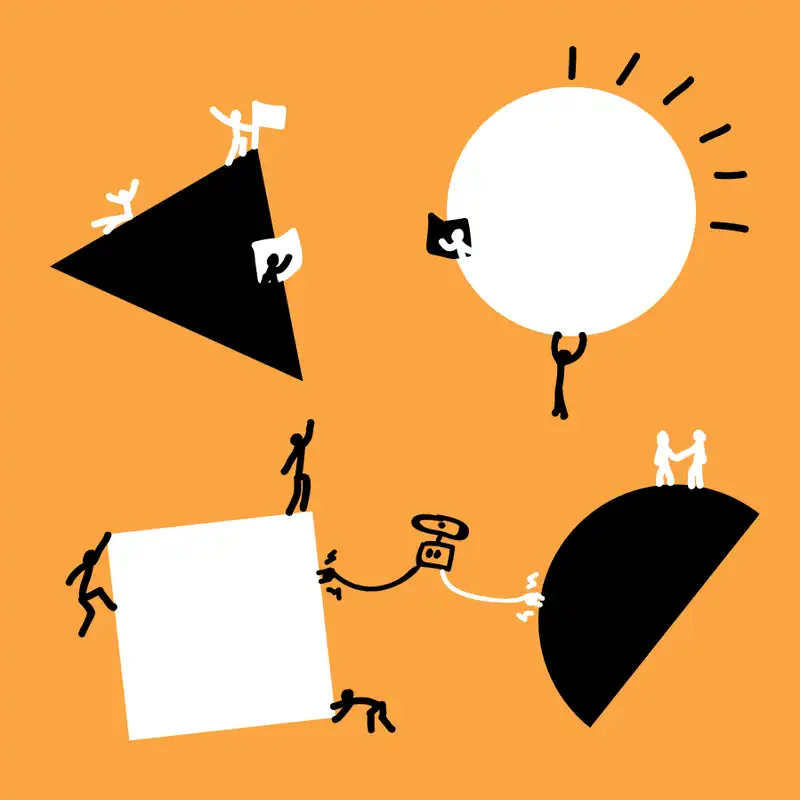In an agile project, the goal of the card sorting activity is to be able to narrow down our first and potentially second deliverables out of the entire list of epics that your client created during brief. In a waterfall project it is used to define a clear roadmap for all epics.
Before you start
- Epics backlog
- Assumptions
- Write down your epics on cards
- Define possible user Stories
- Prepare pens and empty cards
Details
Level of difficulty
Moderate
Stage
- Realisation
- Discovery
Suggested time
Prep: 20 minutes
Workshop: 2 - 4 hours
Participants
- Product owner
- Squad lead
- Designer
- Web engineer
- Test engineer
- Account manager
- Stakeholders
Materials
- Pens
- Sticky notes
- Cards
- Blue tack
- inspiration print outs
- Persona display
- Main goal definition
- Big free wall
Steps
- Start by putting all epics discovered during the brief up onto the wall, organised horizontally. Prep this before the client arrives. Pro tip: Write epics on the same coloured index cards. Pro Pro Tip: Cut the index cards in half to save a tree.

- During the scoping session, you will discuss desired functionality with your client. It is your job to determine whether this is a new epic, or if it’s a user story that belongs to an epic that you already have up on the wall. If it’s a user story, write it on a different coloured card and stick it up on the wall vertically below the corresponding epic.

- When writing a user story card, do so in the following format: WHO, WHAT, WHY. This will help you to easily form your final user stories down the track. If all you have time for in the meeting is to write dot points, you can write the WHO WHAT WHY after the meeting, the example below was created in XD and formed the text-based UX flow for the project.

- Once you are happy that all desired functionality is up on the wall, it’s time to sort them into MUST haves, SHOULD haves and NICE to haves. Do this by marking horizontal lines below the cards to create these three sections and move the cards according to the clients wishes. Once this is complete the team will most likely hold an estimation session to get an insight into how long each issue will take.
- From here you will able to use the estimations to break down issues into deliverables.
Justification
This allows the entire team to build user stories together in an engaging way.




